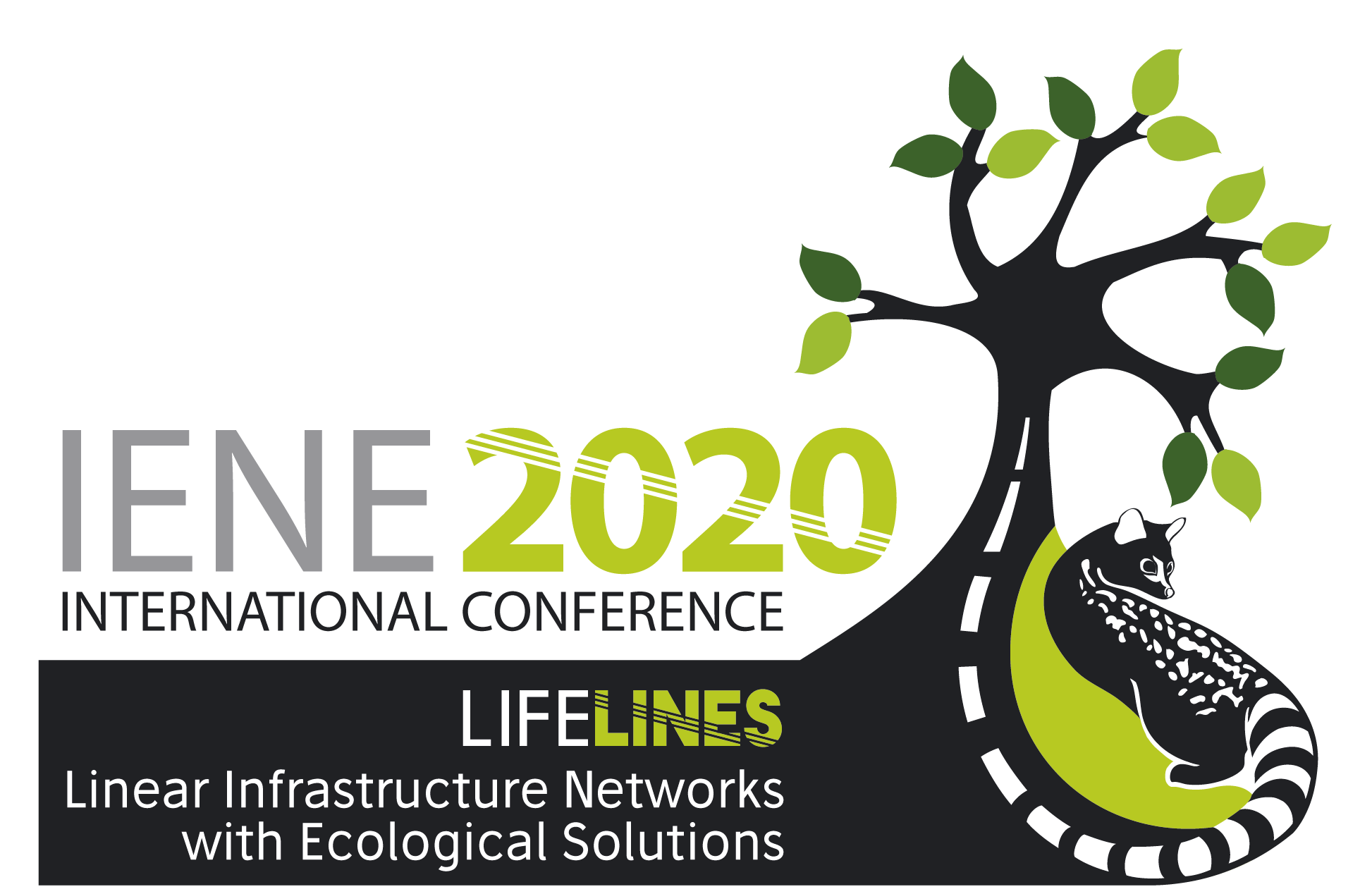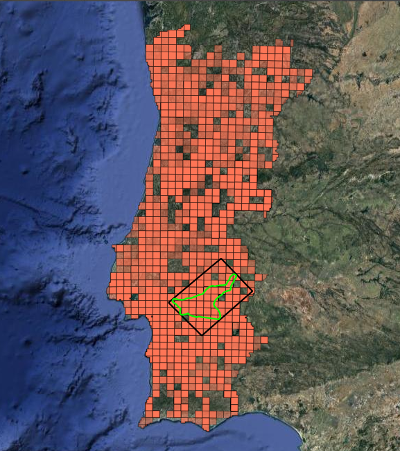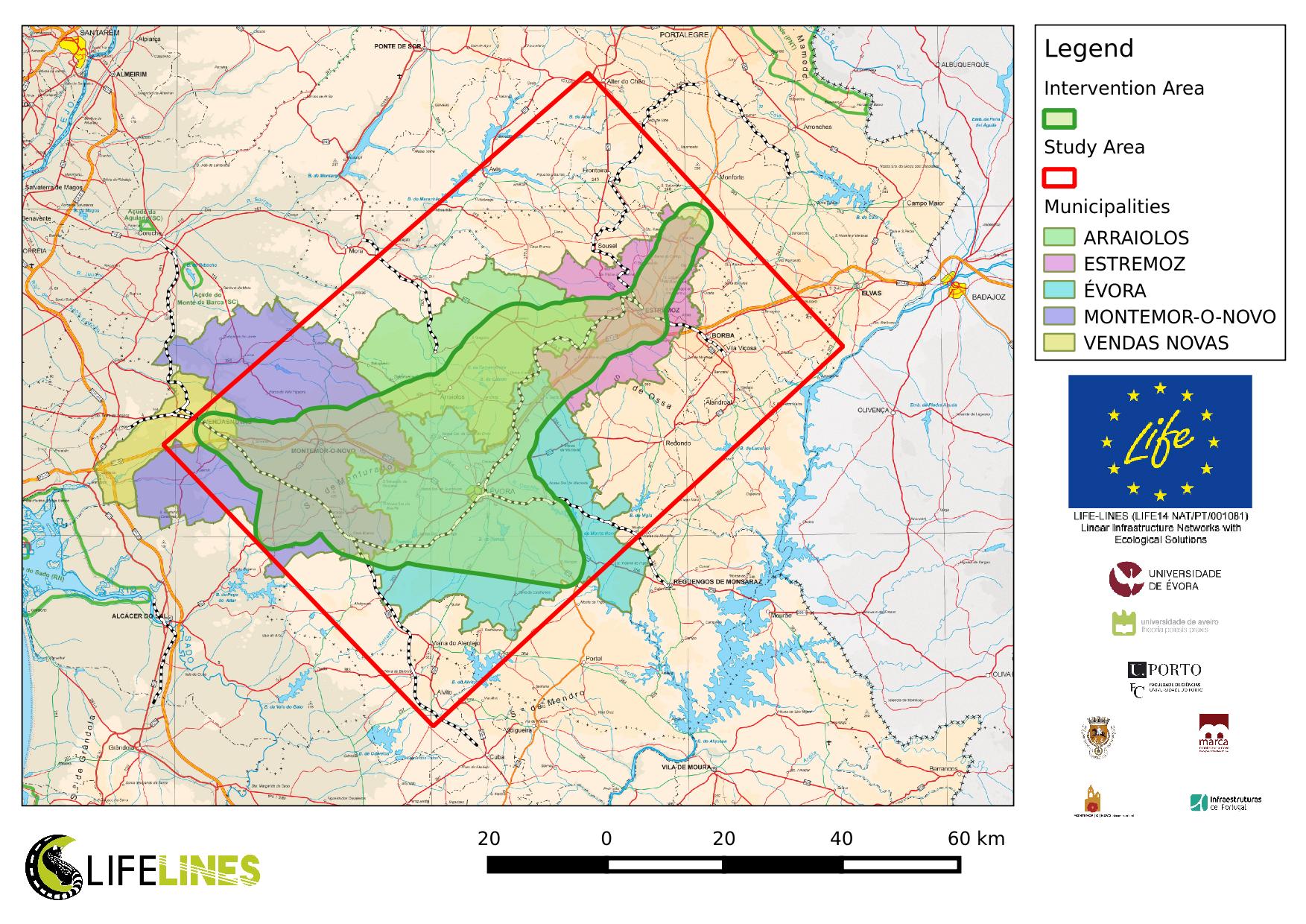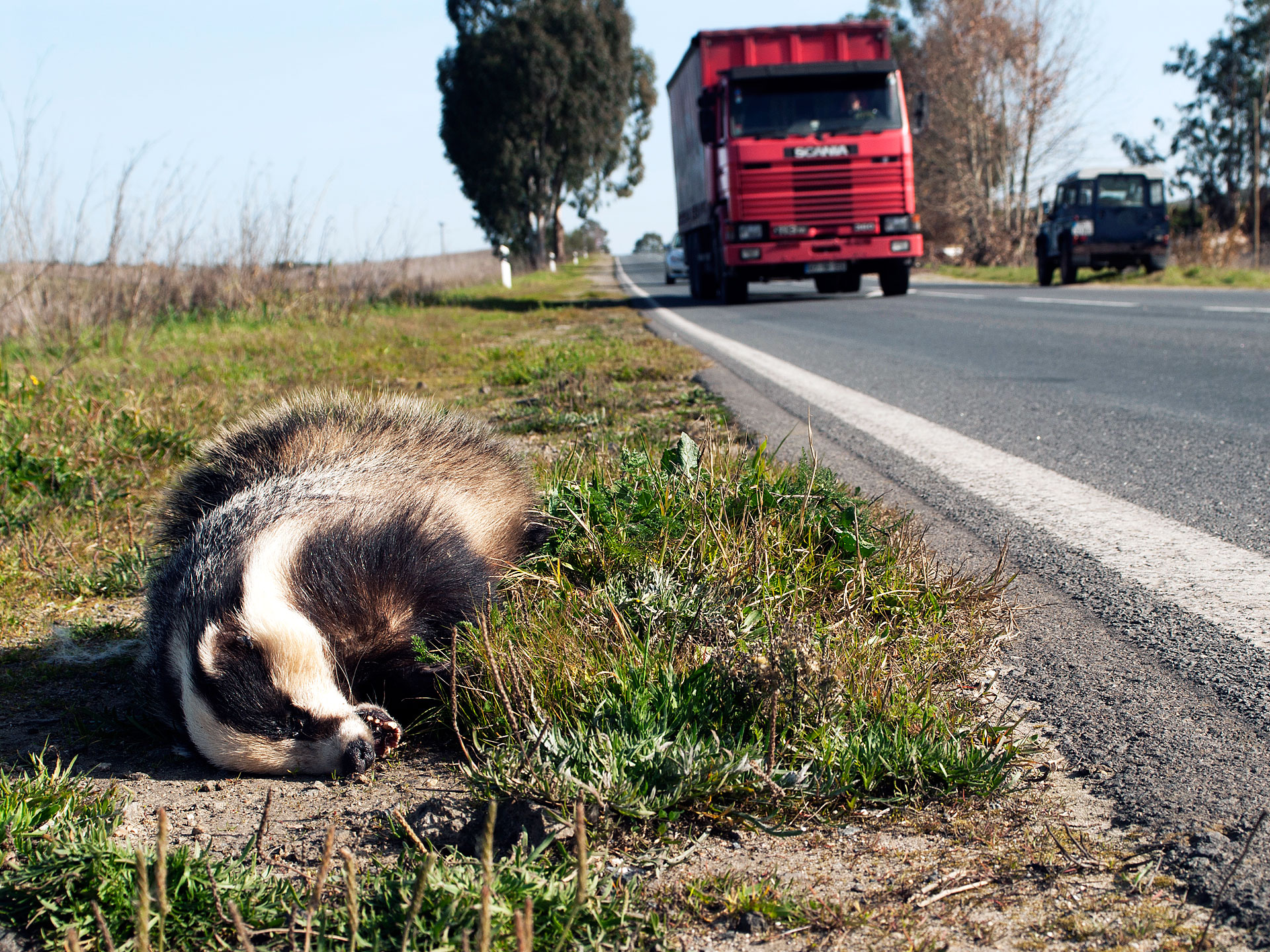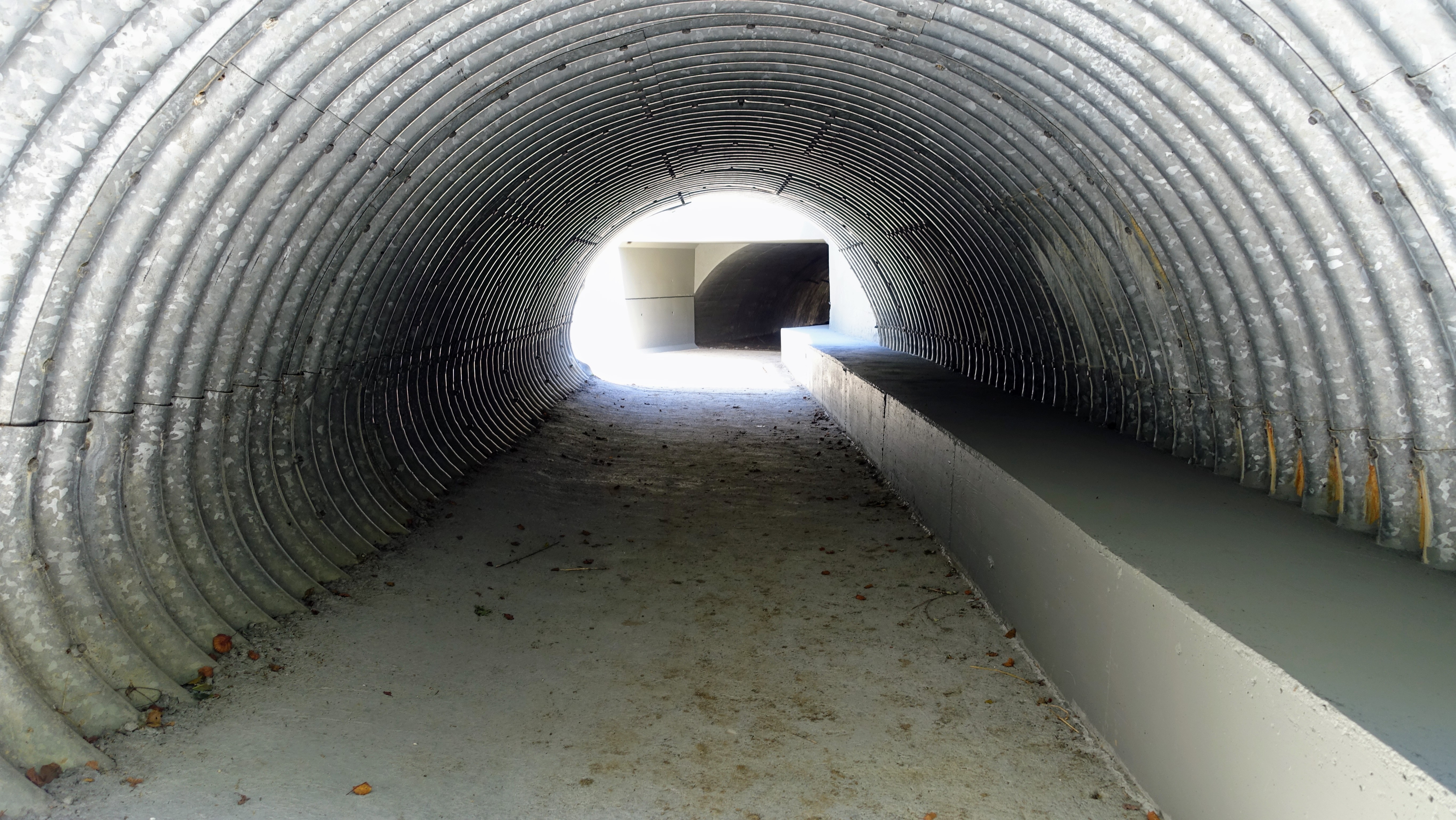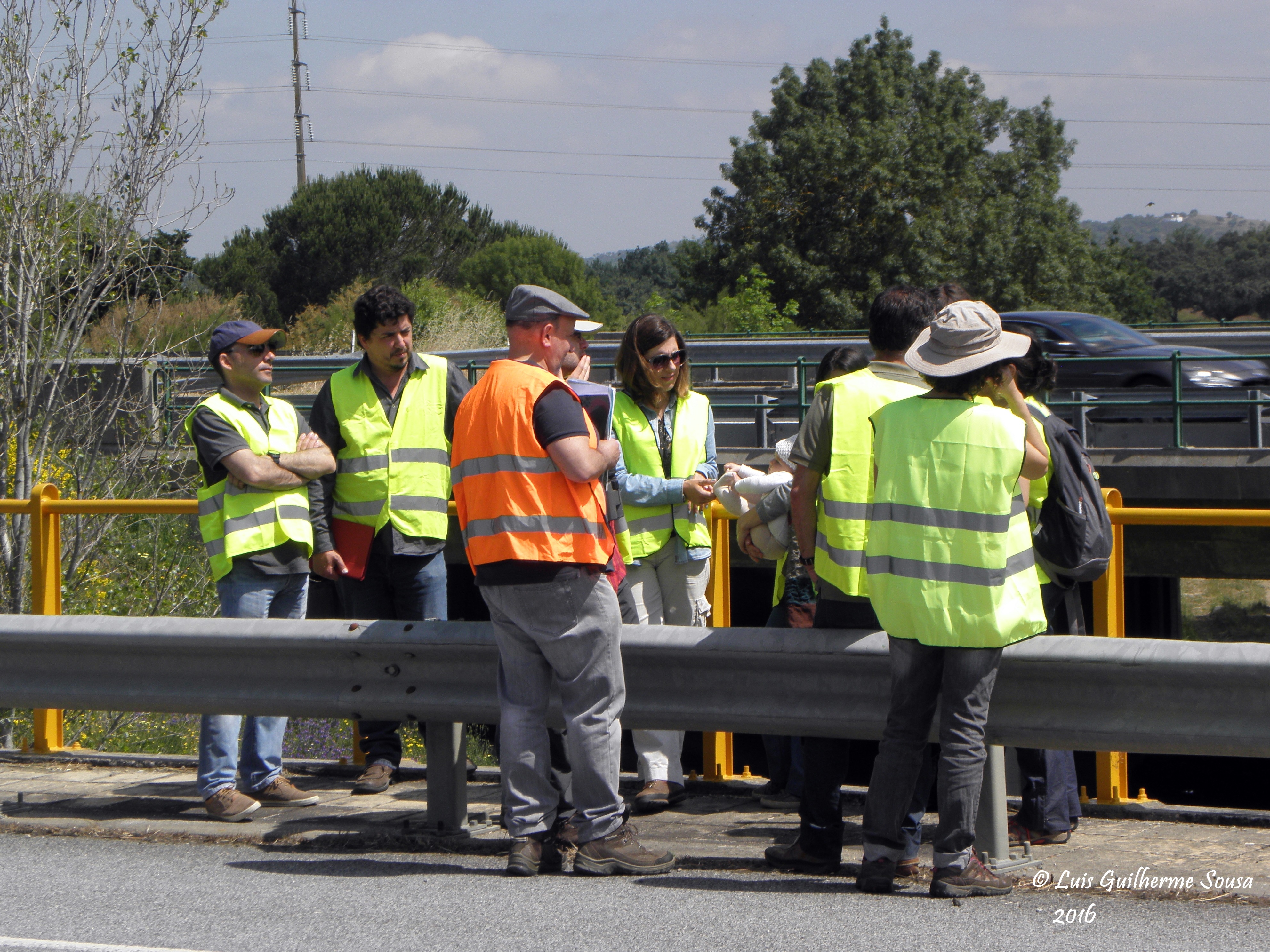Project summary and main aims
The proposed project aims to essay, evaluate and disseminate practices directed at mitigation of negative effects from transport/energy infrastructures in wild fauna and simultaneously promote the creation, along them, of a demonstrative Green Infrastructure, based in corridors and stepping stones that can increment connectivity and improve conservation of local/regional biodiversity. Its target area is one of the main transport/energy corridors linking Portugal to Spain. The project feeds from solid knowledge on existing fauna/flora in the project area and years of roadkill monitoring and from an unusual situation in the project’s socioeconomic setting, including participation of the several stakeholders dealing with the project’s problems and responsibilities to solve them (including builders/managers of linear infrastructures, public/private bodies, with local/national aims, supported by universities of publicly recognized value).
The proposed strategy is based on concepts that result from research of the coordinating beneficiary in the field of mapping landscape functional and structural connectivity, for the target fauna species, having into account their movements and habitat use/preferences. This will be used, for the first time, as a decision support tool with practical conservation aims.
To ensure its targets the project will solve a set of formerly identified problems including those of connectivity, roadkill and barrier effects of transport infrastructures, mortality in power lines, absence of refuges and corridors, scarcity of publicly available decision support data and control of exotic flora. This will be achieved through a set of conservation actions, designed under an integrated vision for the whole area, most of which with a demonstrative or innovative character. For proper evaluation of results, monitoring is also outlined, including ecological, ecosystem functioning and socioeconomic assessments.
The project also includes a set of communication and dissemination actions, targeted at various audiences and including training of agents dealing with the lifecycle of infrastructures, technical seminars of European scope and networking. Overall, one expects replication of the project works, including the creation of analogous Green Infrastructures elsewhere, promoting connectivity and improving the delivery of associated ecosystem functions and services to society.
The work is based on a deep knowledge of the fauna /flora of the project area grounded on years of data collection on the distribution of species and wildlife mortality on existing infrastructures. The intervention is based on the application, for the first time in an integrated way including support to decision and implementation of conservation measures, of maps of landscape connectivity which are drawn up for several species based on their movement and/ or habitat preferences.
What is a Green Infrastructure?
A Green Infrastructure integrates natural and semi-natural areas associated with urban and other human constructions and provides multiple benefits to the citizens who use them, including the benefits of nature conservation, because they comprise biodiversity refuge areas and potential corridors that promote the flow of organisms. The principle behind the Green Infrastructure concept is its multi-functionality which is dependent on the maintenance of the ecosystems in a healthy state. Investments in a Green Infrastructure are generally characterized by a high level of return over time, providing employment opportunities. They can be highly effective in terms of costs and are complementary to the 'gray' infrastructure. They serve the interests of people and nature.
The potential role as biodiversity refuge and/ or green corridor of marginal areas associated with transportation routes and power lines including the verges, the area under the powerlines support poles and small plots resulting from adjustments of the infrastructure corridors, have been ignored for a long time. However, if properly managed, these areas can be important tools to promote landscape connectivity, particularly in human induced changed areas.
What is Landscape Connectivity?
In ecology, landscape connectivity is the ability of the landscape to facilitate or impede the flow of organisms among the various habitats. The degree of connectivity determines the intensity of the dispersion/ movement between areas, which influences gene flow, local adaptation, the risk of extinction, the probability of colonization and the ability for organisms to move in a context of climate change. Greater connectivity is usually associated with less fragmented landscapes. Terrestrial transportation corridors and powerlines, by limiting the fauna movements generally lead to a reduction of landscape connectivity.
The proliferation of linear infrastructures is a recent feature of human societies and occurred exponentially since the mid of the last century. Portugal, is no exception and its territory is crossed by tens of thousands of kilometers of roads, railways and transmission and distribution powerlines. It is one of the European countries where the density of paved roads and highways, per capita, is higher. Currently, in the world and in Portugal, these linear structures are a common feature of modern landscapes, and economic and social gains associated with them are recognized by all.
The term biodiversity means the total variety of life on Earth and includes, genes, species, communities, ecosystems and the ecological processes in which they intervene. It is difficult to assign a monetary value to biodiversity. Several teams of scientists and economists have tried to estimate the global value of biodiversity and, in most cases, have reached huge values; higher than those initially suspected. Many even argue that because human survival depends on the normal functioning of ecosystems, the biodiversity goods and services associated with them represent a supreme value which is invaluable.
Linear infrastructures have negative effects on biodiversity. Among the most significant impacts should be highlighted the increase in mortality from collisions with vehicles, trains or powerlines and electrocution; fragmentation and degradation of habitats and the barrier effect on fauna movements. Terrestrial ground transportation corridors are also an effective channel for the introduction and spreading of alien invasive species through the seeds carried out by vehicles. Over the past 20 years, relations between the presence of linear infrastructures and natural communities have been widely studied in order to find solutions that minimize these impacts. Many of the most recently built infrastructures already integrate specific passages for fauna or other adapted structures (for instance culverts) that allow animals to safely cross the roads and railways; fences and other structures that hinder animals access to the road/ railways, reducing the risk of trampling; anti perching devices and flyers that reduce mortality by electrocution and collision with powerlines. However, in old infrastructures, not submitted to environmental impact assessments, these solutions are rarely implemented.
Recent research lines test new solutions aimed at alerting and manipulate the behaviour of animals, keeping them away from the risky areas. The application of these and previous solutions facilitate the creation of a Green Infrastructure associated with these "lines" making them multi-functional and more sustainable.
Linear Infrastructure Networks with Ecological Solutions. LIFE-LINES (LIFE14 NAT/PT/001081)
Total budget: 5,540,485 Euro UE contribution: 3,324,303 Euro
Project start date:2015/08/01
Project end date:2020/07/31 (extended until 2021/05/31)

